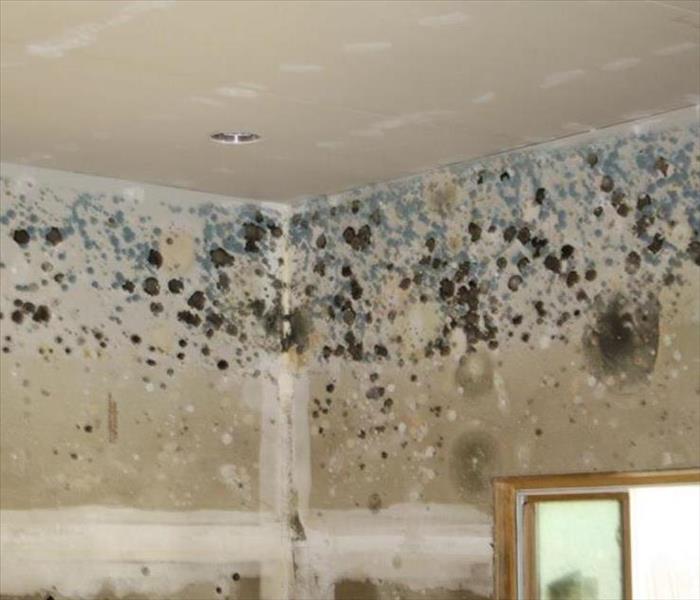Mold, Don't let it Grow!
3/22/2021 (Permalink)
Intrusion of water into your home or place of business can result in mold growth. Water intrusions can result from storm damage, plumbing or equipment failures, long-standing leaks and poor humidity control.
When water intrusions are not addressed right way, the resulting damage can present increased risk of harmful mold growth. Some amount of mold spores are normally present in most environments. If the humidity and moisture levels in a water-damaged environment are not properly returned to normal, mold spare may grow and multiply. Organic materials found inside a building, such as wood, paper, drywall and insulation, provide food sources for mold to flourish. Excessive mold growth can lead to indoor environmental conditions that pose a health threat.
SERVPRO Of Grand Traverse Area handles water damages every day and knows prompt action is required to prevent mold growth. Mold is more likely to spread when an environment has been subject to moisture for a long period of time. If your property has sustained a recent eater damage, it is vital to remove excess water and dry the structure promptly. If there is an ongoing moisture problem in the building, it is important to be alert for:
- The presence of visible mold.
- Strong musty odors which may indicate mold is present.
- Any evidence of past moisture problems that might have caused undetected mold growth.
- Excessive humidity
If you think you might have a mold problem, give our office a call at (231) 943-9750.
Managing Mold
3/4/2020 (Permalink)
 Building structure that has mold growth
Building structure that has mold growth
When there's a water intrusion, like a roof leak or leaking water line, mold can quickly become a problem in your home or business. Mold can cause health effects and can also cause significant damage to your property. Fortunately SERVPRO of Grand Traverse Area has the training, protective gear, and specialized equipment necessary to handle your mold problem. Although every mold damage scenario is different requiring a unique solution, the general mold remediation process stays the same. The following steps illustrate a "typical" mold remove process.
Call SERVPRO of Grand Traverse Area
A representative will ask a series of questions to help determine the necessary equipment, resources and personnel needed.
Inspection and Damage Assessment
Your property will be carefully inspected for signs of mold using technology designed to detect mold and hidden water sources. Mold feeds on cellulose and water can be hidden from plain view.
Mold Containment
Various containment procedures will be placed to prevent the spread of mold and isolate the contaminated area with physical barriers and negative air pressure to keep the mold spores from spreading during the cleanup process.
Air Filtration
Specialized filtration equipment captures microscopic mold spores out of the air. Our technicians utilize powerful air scrubbers and HEPA vacuums to prevent the spread of these mold spores.
Removing Mold and Mold-Infested Materials
This step depends on the amount of mold growth and the types of surfaces on which mold appears. Antifungal and antimicrobial treatments will be used to eliminate mold colonies and help prevent new colonies from forming. Removing and disposing of mold-infested porous materials, like drywall and flooring, may be necessary to remediate mold growth.
Restoration
Depending on the level of mold damage, drywall, subfloors, and other building materials may be removed. This step may involve minor repairs, such as replacing drywall, painting, and installing new flooring.
SERVPRO of Grand Traverse Area understands mold and mold growth and have the training and equipment to remediate mold your home or business.



 24/7 Emergency Service
24/7 Emergency Service

